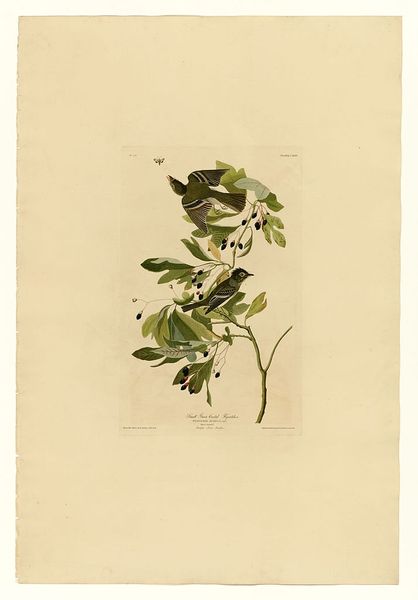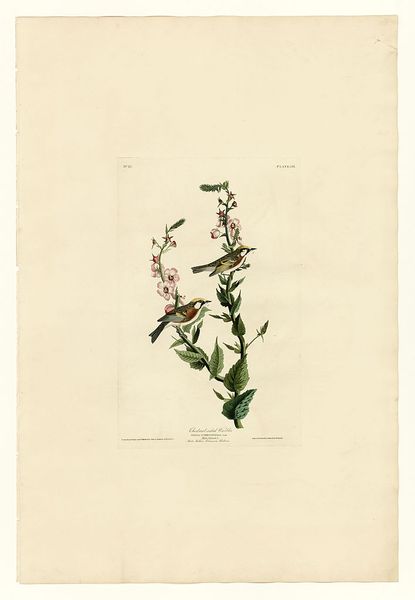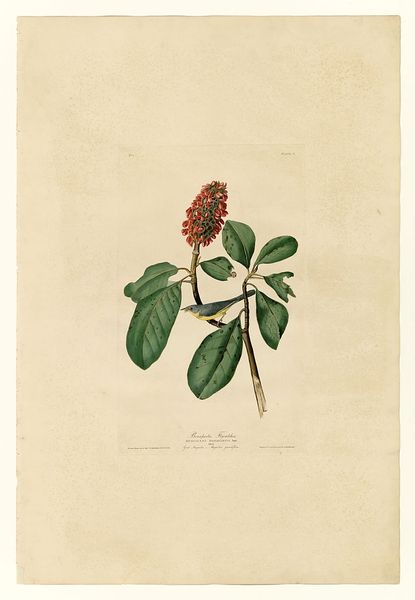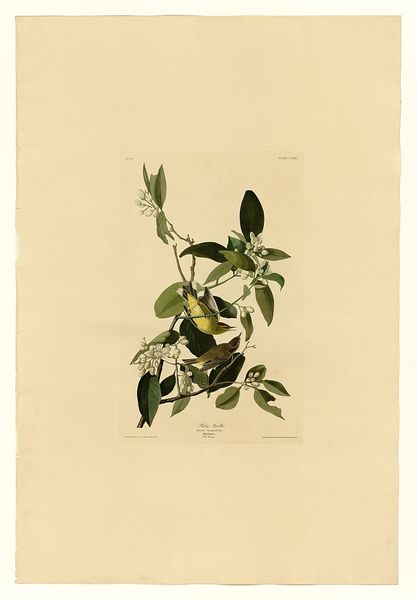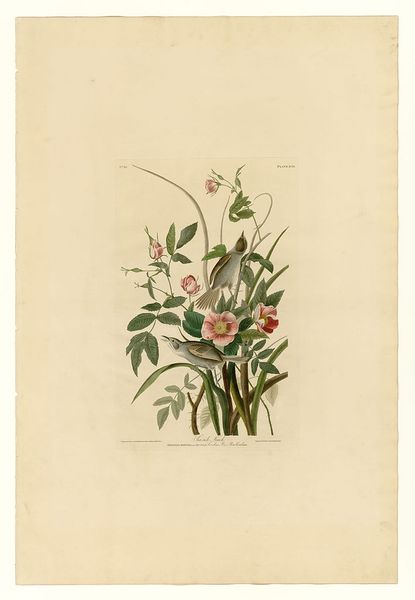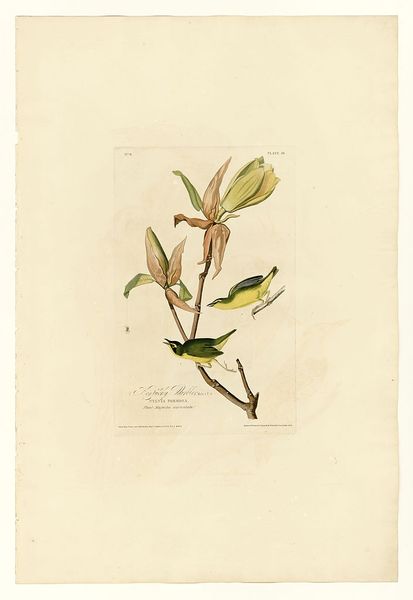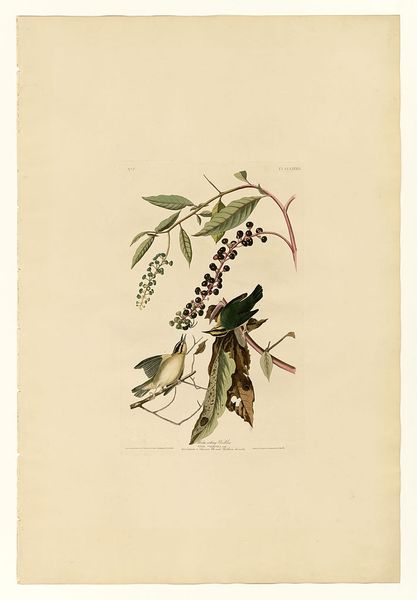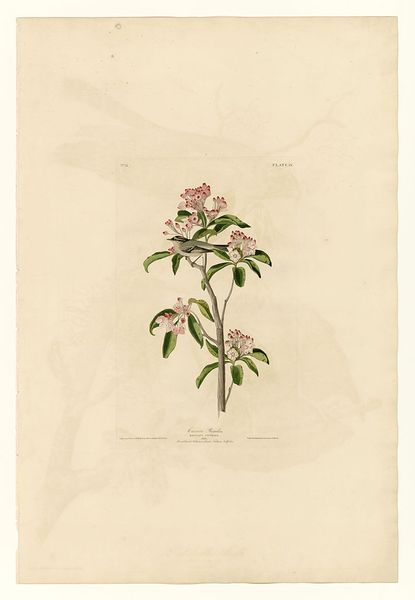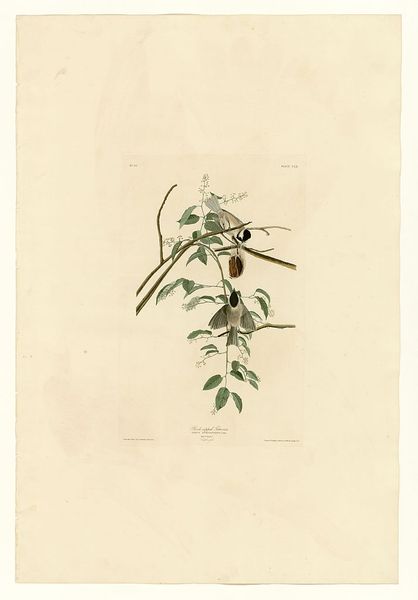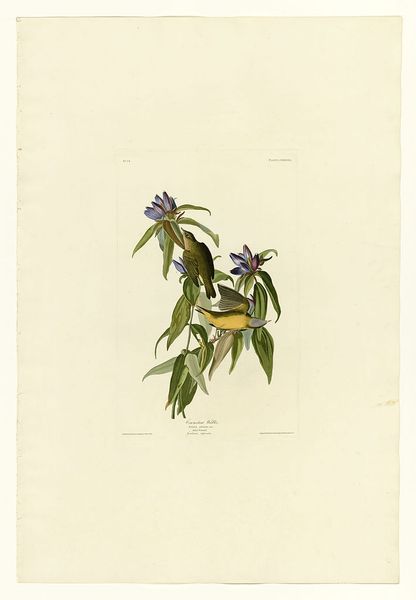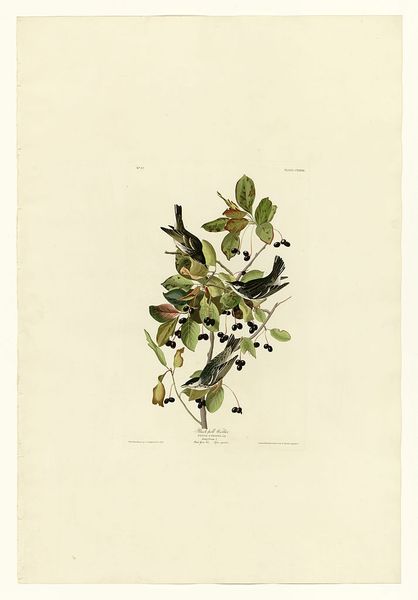
drawing, painting, paper, watercolor
#
portrait
#
drawing
#
painting
#
impressionism
#
landscape
#
paper
#
watercolor
#
romanticism
#
botanical drawing
#
watercolour illustration
#
realism
Copyright: Public domain
Curator: Right, let’s dive into this beautiful watercolor and drawing, Plate 103, "Canada Warbler" by John James Audubon. I always think of it as more than just ornithological illustration, you know? Editor: My first impression? Serenity. A quiet corner of the world perfectly still, despite the vibrant colors of the warblers themselves. It feels meticulously observed, yet incredibly gentle. Curator: Absolutely. Audubon, a complex character, deeply embedded himself within the landscape, shooting specimens for study, for this precise documentation. He romanticized the wilderness while contributing to its ongoing transformation. Editor: He certainly captured these little beings so meticulously, down to the ruffled edges of the rhododendron petals and those leaves...nibbled on, perhaps by the very caterpillars these birds would prey upon? There’s an ecosystem humming silently within the frame. And then, how did the display in natural history of these images effect policy? Curator: That’s what makes it compelling, right? This tension between preservation and exploitation. It's difficult to say but Audubon’s work really democratized an understanding of nature and made it seem that wildlife was available to all, regardless of economic bracket. And as an artifact it's worth noting that original edition's now command immense value on the art market – an irony, given its popular roots. Editor: Hmm. An interesting twist. Even the way Audubon renders light – soft and diffuse – contributes to this feeling of intimacy. I can almost feel the humidity of the forest on my skin, can't you? I notice this tension of capturing every single detail against the freedom, in what is painted and what he leaves unpainted to represent negative space. Curator: Exactly. It’s this negotiation, this delicate balance between objective record and subjective experience, that draws me to it every time. Editor: Yes, a beautiful window onto a world both present and lost, if you will. Curator: Indeed, a quiet but potent commentary on our relationship with the natural world, viewed, in a particular way in the history of science and in museum spaces.
Comments
No comments
Be the first to comment and join the conversation on the ultimate creative platform.
